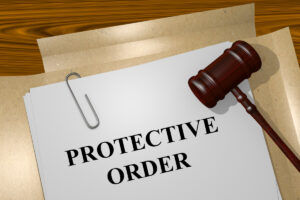What Is a Protective Order? Is It the Same as a Restraining Order? How Can I Get a Protective Order?
 You’ve been in a relationship but it’s become ugly. You’ve been the victim of physical, emotional, or other types of domestic abuse. You’ve ended the relationship, but you live in constant fear and apprehension. How do you go about getting a protective order? What can you expect a protective order to do for you? What can you expect to happen if the other party violates the protective order?
You’ve been in a relationship but it’s become ugly. You’ve been the victim of physical, emotional, or other types of domestic abuse. You’ve ended the relationship, but you live in constant fear and apprehension. How do you go about getting a protective order? What can you expect a protective order to do for you? What can you expect to happen if the other party violates the protective order?
What Is a Protective Order in Texas?
A protective order is a legal document, issued by a court, that compels a person to stop engaging in certain types of actions with respect to another person or persons. Typically, the person seeking the protective order has been the victim of violence, harassment, stalking, or other undesirable contact with the person being ordered to refrain from the specified behaviors. Commonly, a protective order will direct the named person to:
- Refrain from any acts that constitute threats, harassment, or acts of violence directed to the protected person or their children or loved ones
- Keep a certain minimum distance from the protected person, their home, their workplace, and their children, as well as their children’s school or daycare facilities
- Not carry a weapon, even if licensed to do so
- Refrain from monitoring or tracking the protected person, either in person or digitally
- Refrain from communicating with the protected person in person or by phone, mail, email, text message, or any other way
A protective order in Texas may also compel the perpetrator to take anger management classes, attend a substance abuse program, submit to random drug testing, or separate their cell phone account from that of the protected person. If the parties are living together when the protective order is issued, the court may require that the abuser leave the home and pay child support, if appropriate.
Is There a Difference Between a Protective Order and a Restraining Order in Texas?
Yes. A protective order typically grants police the authority to act in the event the order is violated. The offender can be arrested and charged with a criminal act. A restraining order, on the other hand, typically does not convey any authority to law enforcement officers. Instead, when a restraining order is violated, it’s up to the protected party to notify the court. The sanctions typically don’t involve criminal penalties but may result in monetary damages or the imposition of additional restrictions.
How Can You Get a Protective Order in Texas?
The best way to obtain a protective order is with the assistance of an experienced attorney. Your lawyer will typically file an immediate request with the county court. The judge will schedule a hearing and may even issue a temporary protective order if there’s sufficient evidence of a potential risk of violence.
Let the Proven Family Law Attorneys at Bailey & Galyen Help Protect Your Rights
At the law offices of Bailey & Galyen, we have more than 40 years of experience handling a wide range of divorce and family matters, including all issues related to protective orders. We know what needs to be done to put measures in place to protect you and your loved ones. Contact us by e-mail or call our offices at one of the convenient locations listed below. Our phones are answered 24 hours a day, seven days a week.








